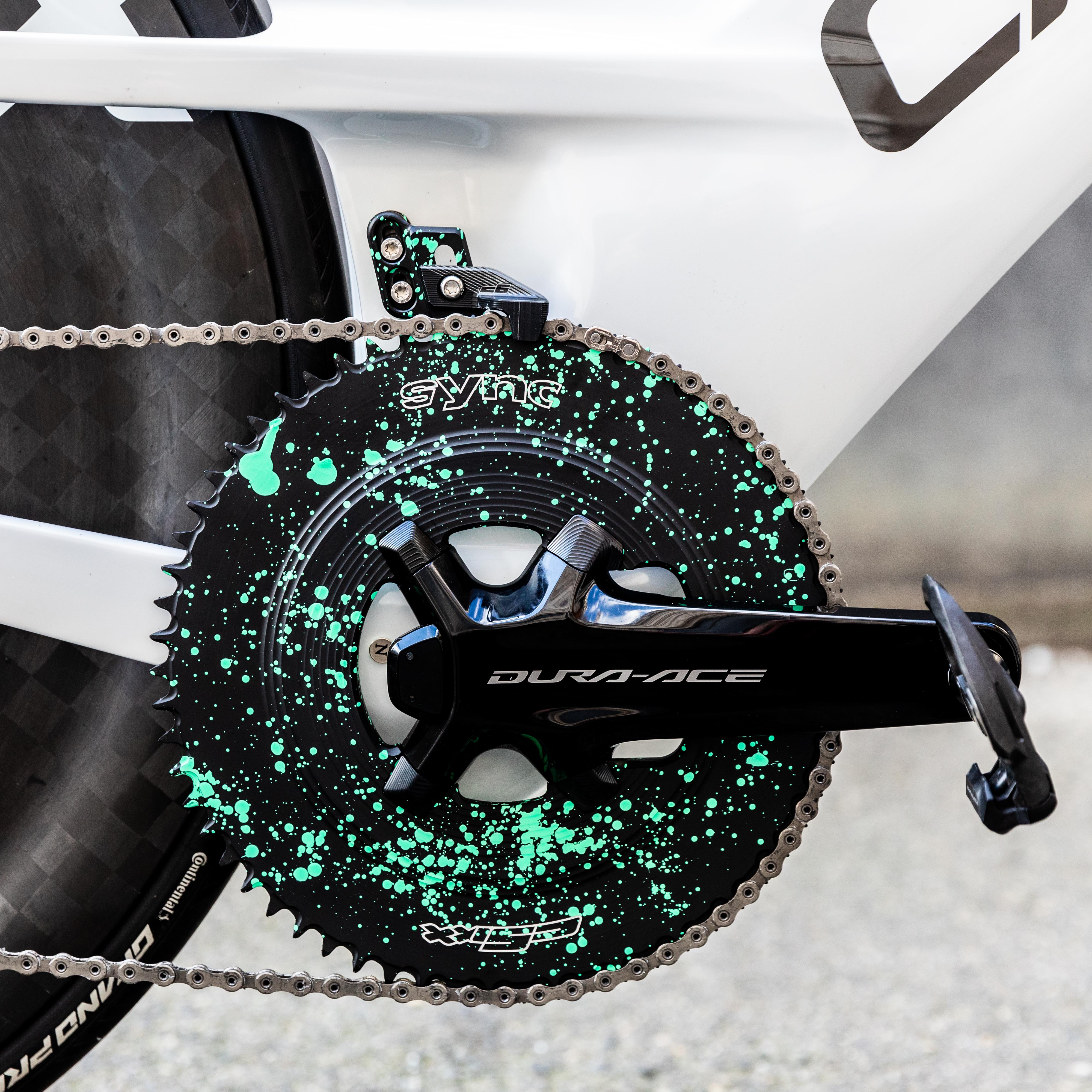Driveline Efficiency: Mythbusting
5th Jul 2024
Using a single chainring is all the craze in 2024 - but, there are still plenty of myths hanging around.
In this article, we go myth-busting...
- “I should use a brand new chain on race day”
The brand new, factory-supplied chain is the fastest. That’s logical, right? It may be logical, but it’s also not true.
Brand-new chains from OEM manufacturers such as Shimano and SRAM, are often at their slowest when they first come out of their packaging. This is for multiple reasons: the factory grease and chain’s tightness being the main two.
The first thing you should do with a brand-new chain is to chemically strip it. This will both increase efficiency and the overall lifespan of your components as it’ll rid of all the contamination.
If you’re looking to maximise efficiency, please do not use a brand-new chain on race day!!

2. “Size Doesn’t Matter”
Size does matter - at least when it comes to chainrings.
With our Driveline Ecosystem, our chainrings start at a 54T and range to a 62T.
Our focus with 1X chainrings has been to optimise the chainring offset and tooth profile, to deliver the maximum usage of smooth-running gears, improving chain line and enhance the interaction of chain and chainring.
In almost all cases, it is more efficient to use a bigger chainring at the front, and to be further up the cassette at the back. We’d much rather you use a 58T chainring and spend time in the 14t or 15t on the cassette, than lower down closer to the 11t. The straighter the chain, the less chance of introducing driveline losses.
3. “Chain care takes too long”
Immersive vs. wax + drip
It does take time, but if you can develop a wax/use cycle that sees you cycling through 3-5 chains, you can become quite efficient with the process. The time that you spend on your chains is also offset by less time degreasing your driveline, which has the additional downside of taking a toll on driveline bearings.
A good compromise for those sticky situations where you simply don't have the time to remove a chain and go through the whole process, is a supplementary wax-based drip lube, such as the Silca Super Secret drip lube or Ceramic Speed drip lube.
4. “I need an OSPW…
Oversized Pulley Wheels (OSPW) have been made popular by Ceramic Speed. The large jockey wheels have ‘bling’ and they add something to any bike. Ceramic Speed also claims that they provide 30%-60% energy savings.
Maximising driveline efficiency "is a thing" - Ceramic Speed has
built a brand out of the concept, good great by them.
Adam Kerin at Zero Friction Cycling explains:
“You only really want to go OSPW If you've got a bountiful budget, and you like to pimp out your bike,- it's a non-zero thing. If you've already got a really fast, well-treated chain, then the watt savings are going to be really, really small - only fractions of a watt.”
We decided not to include OSPW in our Driveline Ecosystem, Ken Ballhause explains why:
"At Sync, we appreciate the handful of products on the market that have executed the OSPW concept well. Our experience is that some of these products detract from driveline performance with a compromise in shift performance and a compromise in bearing longevity.
We have seen instances where even the chain wax has contaminated the bearings, or the night in transition zone has let moisture and contaminants (sand/salt) enter poorly sealed bearings. What we demand from a replacement solution is simple, a performance improvement.
Where we have seen a gap in the market is a simple pulley replacement option, maximising the size of the pulley wheels (12t/14t) that can fit in a standard cage. Our pulleys focus on chain retention (not allowing the chain to jump off a pulley over bumps) and shift precision while maximising the size of the pulleys and the efficiency of a ceramic bearing. We are stoked on our partnership with cSixx and HSC Ceramics, where we think the brief has been nailed and the end result exceptional."
--
I remember when I was sixteen, I turned up to a National TT with a 58T chainring on the front, and everyone thought I was crazy. At the time, I don't really know why I did it, but I just presumed it was faster. Chainring technology has come a long way in the seven years since I did that. There's now research behind materials, tooth-profile, and optimised ratios. At the end of the day, we all just want to go as fast as possible. It's that simple.
About the Author
Joe Laverick’s cycling introduction was via the British time-trial scene, since starting the sport, he has been all about speed. He’s a freelance writer and privateer racer who mixes road, time trial and gravel racing. To this day, he remains one of the only riders on the planet to have beat Remco Evenepoel in a time trial.

